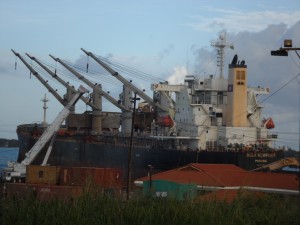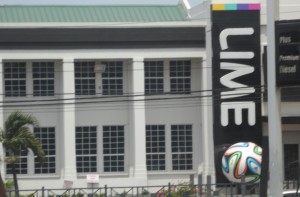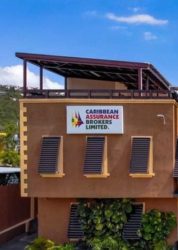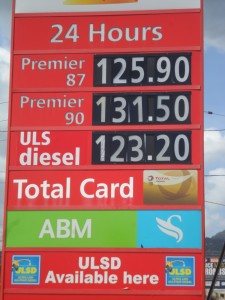 When the government of Jamaican imposed the specific excise tax on automotive fuels of J$7 per litre the motoring public were told that some of the tax would be used partially to hedge against future rise in oil prices on the world market above then current levels.
When the government of Jamaican imposed the specific excise tax on automotive fuels of J$7 per litre the motoring public were told that some of the tax would be used partially to hedge against future rise in oil prices on the world market above then current levels.
Motorist would be forgiven, if they felt that part of the funds collected and used to hedge against future sharp rise in the price of fuel, would also be used to cushion the price at the pumps that would jump as a result of upward price movement of oil. Based on information contained in the latest report from the International Monetary Fund (IMF) on their assessment of Jamaica’s performance under the extended fund facility, motorist seem unlikely to benefit from any easing at the pumps in the future, should the price jump back sharply on the world market for petroleum.
“Part of the proceeds from this tax package, have been allocated to an energy stabilization fund to both purchase a financial hedge against a future oil price increase and sponsor investments in climate-friendly energy projects. The authorities and staff concurred that it will be important to ensure a transparent design of the hedging instrument. Staff advised that the use of any resources from the financial hedge should be focused on mitigating the impact of higher oil prices on the poor and on enhancing fuel efficiency, rather than on stabilizing domestic fuel prices”, the IMF said.
The big question is whether any further hedging will be executed now that the price has slipped back into the low US$40 per barrel with the world flush with oil with technical indicators pointing to even lower prices ahead. In such a scenario, what will the levy of gasoline be used for?
No motorists’ benefit from gas tax hedging
Cut the civil service – IMF message
 Debt servicing cost, wages and related expenses are two big items that have prevented the Jamaican government from performing the role of government the way they ought as money expended on the excess staffing and by and large part of the debt servicing are non-productive expenditure that divert funds from areas of need. It is therefore not surprising that the International Monetary Fund (IMF) has placed a great deal of focus on these two areas in getting the government to reform the system and move the country intro economic equilibrium. The Fund is of the view that in spite of the move to contain the wage bill by constraints and attrition, more is needed to be done to restore balance in this area.
Debt servicing cost, wages and related expenses are two big items that have prevented the Jamaican government from performing the role of government the way they ought as money expended on the excess staffing and by and large part of the debt servicing are non-productive expenditure that divert funds from areas of need. It is therefore not surprising that the International Monetary Fund (IMF) has placed a great deal of focus on these two areas in getting the government to reform the system and move the country intro economic equilibrium. The Fund is of the view that in spite of the move to contain the wage bill by constraints and attrition, more is needed to be done to restore balance in this area.
“Public sector reform is a key pillar of the fiscal consolidation effort over the medium term. The authorities aim to reduce the wage bill from a projected 9.9 percent of GDP in fiscal year 2015/16 to 9 percent of GDP in fiscal year 2016/17. To date, much of this lower spending has been driven by nominal wage freezes, and authorities aim to secure continued moderate wage increases in the context of the ongoing wage negotiations, mindful of the trade off with other spending priorities. There is, however, a need to refocus attention on modernizing the public sector and transitioning toward a smaller and more effective civil service”, the IMF review report says.
The target is steep a cut from 9.9 to 9 percent is a 10 percent change. The wage settlement for 2015 is 4 percent and if all of that was paid in the current fiscal year it would require nominal gross domestic product to rise around 5 to 6 percent. With inflation looking very subdued and real growth not looking robust, the target is likely be a big challenge. The other issue is that even if the government were to achieve the target is, will maintaining it be sustainable long term? The government can cut the number of workers and the wage bill by divesting some services rather than lay workers off.
IMF wants more in NIR
 The central bank should also continue purchasing international reserves to provide insurance against external risks , particularly since reserves fall short of the Fund’s metric for reserve adequacy, the International Monetary Funds (IMF) states in the March assessment on Jamaica performance under the fund agreement.
The central bank should also continue purchasing international reserves to provide insurance against external risks , particularly since reserves fall short of the Fund’s metric for reserve adequacy, the International Monetary Funds (IMF) states in the March assessment on Jamaica performance under the fund agreement.
The external risks are related to PetroCaribe inflows and the imminent U.S. monetary tightening, the IMF said.
“There was broad agreement on the need to replace, over time, borrowed reserves with owned reserves. The results from applying the IMF metric for Assessing Reserve Adequacy show that Jamaica’s level of international reserves, at 80.4 percent of benchmark in 2015, is still significantly below the suggested adequacy range of between 100 and 150 percent, pointing to the need for continued exchange rate flexibility”, the IMF report on Jamaica stated.
bringing the amount to 100 percent of the desired level would mean bring the amount close to US$3 billion and 150 percent would take it within the US$4 billion mark.
Sagicor Real Estate Fund tops trading on JSE
Sagicor Real Estate Fund traded 12,553,254 units days after the company reported a successful rights issue that raised $5.2 billion. Most trading took place at $6.95, in shares crossed by Scotia Investments as brokers for clients. The stock price ended at $7.50 at the close, after losing 50 cents.
Market activity generally, on the Jamaica Stock Exchange ended with just 31 securities changing hands as 19,174,117 units, valued at $129,515,704 were exchanged. Sagicor Real Estate Fund accounted for a large portion of the monetary consideration. Seprod also chipped in with a fair amount. At the end, 8 stocks gained, compared to 11 that declined in all market segments. The JSE Market Index declined 648.07 points to 98,149.98, the JSE All Jamaican Composite index fell 724.25 points to 108,644.42 and the JSE combined index lost 916.38 points to end at 101,195.27.
on the Jamaica Stock Exchange ended with just 31 securities changing hands as 19,174,117 units, valued at $129,515,704 were exchanged. Sagicor Real Estate Fund accounted for a large portion of the monetary consideration. Seprod also chipped in with a fair amount. At the end, 8 stocks gained, compared to 11 that declined in all market segments. The JSE Market Index declined 648.07 points to 98,149.98, the JSE All Jamaican Composite index fell 724.25 points to 108,644.42 and the JSE combined index lost 916.38 points to end at 101,195.27.
IC bid-offer Indicator| At the end of trading, in the main and junior markets, the Investor’s Choice bid-offer indicator had a reading of 13 stocks with bids higher than their last selling prices and 4 with offers that were lower.
In trading, Cable and Wireless had 1,700,000 shares changing hands to close at 48 cents, Caribbean Cement traded 10,000 shares at $8, for a 38 cents gain. Desnoes & Geddes traded 779,322 shares at $7, JMMB Group had 13,100 shares changing hands at $7.70 after gaining 5 cents, 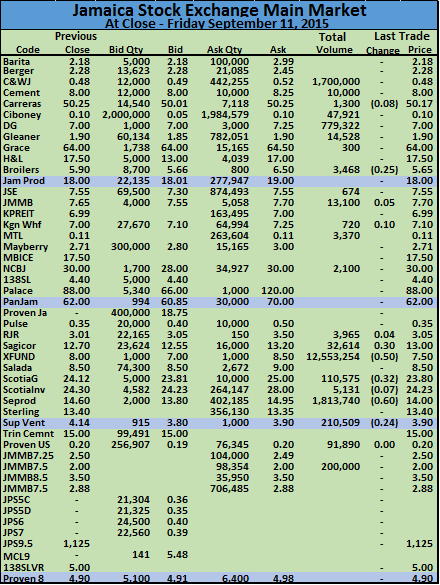
Sagicor Group with 32,614 shares changing hands, closed at $13 with a 30 cents increase. Scotia Group traded 110,575 units in closing at $23.80, for a fall of 32 cents, Seprod traded 1,813,740 shares at $14 while losing 60 cents. Supreme Ventures traded 210.509 shares but lost 24 cents in ending at $3.90, Proven Investments ordinary share traded 91,890 units at 19.9 US cents after rising 0.004 cents and Jamaica Money Market Brokers 7.50% preference share traded 200,000 units at $2.
Massive BOJ FX sale on Thursday
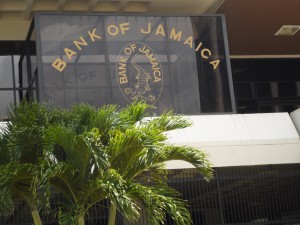 Bank of Jamaica intervention into the foreign exchange market pushed trading well over the US$100 million market on Thursday, that did not stop the local currency form declining, as it moved even closer to $120 to the US dollar. The selling rate for the Jamaican dollar moved up by 3 cents on Thursday, meanwhile the highest rate fell to $123.26 on Thursday from J$124.12 on Wednesday.
Bank of Jamaica intervention into the foreign exchange market pushed trading well over the US$100 million market on Thursday, that did not stop the local currency form declining, as it moved even closer to $120 to the US dollar. The selling rate for the Jamaican dollar moved up by 3 cents on Thursday, meanwhile the highest rate fell to $123.26 on Thursday from J$124.12 on Wednesday.
Purchases by dealers of foreign currencies on saw buying of the equivalent of US$124,150,664 in stark contrast to US$26,434,145 on Wednesday, while they sold the equivalent of US$118,010,252, previously US$32,677,054.
In US dollar trading , dealers bought US$121,494,099 compared to US$23,310,357 on Wednesday. The buying rate for the US dollar is up 76 cents to $118.44 and US$116,060,844 was sold versus US$31,118,844 on Wednesday, the selling rate rose 3 cents to close at $118.62. The Canadian dollar buying rate rose 11 cents to $86.97, with dealers buying C$990,249 and selling C$713,506, at an average rate that climbed 72 cents to $89.81. The rate for buying the British Pound gained 80 cents to $179.58 for the purchase of £1,220,729, while £784,302 was sold, at an average rate that rose 31 cents to end at $182.58. At the end of trading, it took J$132.43 to purchase the Euro, a fall of 3 cents from Wednesday’s rate, according to data from Bank of Jamaica, while dealers purchased the European common currency at J$129.45, a decline from Wednesday’s rate of 35 cents. Other currencies bought, amounted to the equivalent of US$78,385, while the equivalent of US$201,993 was sold.
The Canadian dollar buying rate rose 11 cents to $86.97, with dealers buying C$990,249 and selling C$713,506, at an average rate that climbed 72 cents to $89.81. The rate for buying the British Pound gained 80 cents to $179.58 for the purchase of £1,220,729, while £784,302 was sold, at an average rate that rose 31 cents to end at $182.58. At the end of trading, it took J$132.43 to purchase the Euro, a fall of 3 cents from Wednesday’s rate, according to data from Bank of Jamaica, while dealers purchased the European common currency at J$129.45, a decline from Wednesday’s rate of 35 cents. Other currencies bought, amounted to the equivalent of US$78,385, while the equivalent of US$201,993 was sold.
Highs & Lows| The highest and lowest rates for trading the US dollar all declined on Thursday. The highest buying rate dropped $1.70 to $117.60,  the lowest buying rate fell 67 cents to $96.19, the highest selling rate lost 86 cents to end at $123.26 and the lowest selling rate dived $19.15 to $96.15. The highest buying rate for the Canadian dollar climbed 50 cents to $91, the lowest buying rate is up 66 cents to $71.63 and highest selling rate fell 50 cents to end at $92.50, the lowest selling rate added $1.30 to end at $86.30. The highest buying rate for the British Pound, climbed 50 cents to $183.20, the lowest buying rate jumped 87 cents to $147.28, the highest selling rate dropped $1.83 to $186.92 and the lowest selling rate remained unchanged at $176.
the lowest buying rate fell 67 cents to $96.19, the highest selling rate lost 86 cents to end at $123.26 and the lowest selling rate dived $19.15 to $96.15. The highest buying rate for the Canadian dollar climbed 50 cents to $91, the lowest buying rate is up 66 cents to $71.63 and highest selling rate fell 50 cents to end at $92.50, the lowest selling rate added $1.30 to end at $86.30. The highest buying rate for the British Pound, climbed 50 cents to $183.20, the lowest buying rate jumped 87 cents to $147.28, the highest selling rate dropped $1.83 to $186.92 and the lowest selling rate remained unchanged at $176.
US$316M import drop exports down $81m
The shifts in exports and imports resulted in the merchandise trade deficit falling sharply by 13.4 percent to US$1.52 billion. The deficit was US$1.76 billion in the similar 2014 period. Imports for the current 2015 period amounts to US$2.09 billion, while earnings from exports amounted to US$565 million, a fall of 12.5 percent from the previous 2014 period.
Imports for the year to May were down sharply for many of the category of goods imported. Imports of Raw Materials and Intermediate Goods amounted to US$1.124 billion, a decline of US$354 million, down 24 percent. Consumer Goods rose by 5.9 percent or US$38 million to US$684 million, Imports of Food and Beverages fell by 1 percent to US$275 million. Capital Goods excluding Motor Cars accounted for US$216 million of imports, up from US$214 million in the comparable 2014 period. ‘Other Industrial Transport Equipment’ increased by 2.4 percent or US$7.7 million due to higher imports of buses for the transport sector and ‘Machinery and Equipment’ decreased to a value of US$113 million. Passenger Motor Cars fell by US$2.4 million or 3.5 percent to US$64 million.
Major Traditional Domestic Exports were flat at US$350 million, compared to the same period in 2014. “Mining and Quarrying” grew by 4.7 percent or US$12.9 million to US$288 million during January to May 2015. ‘Bauxite’ rose by US$5.3 million or 10 percent to US$58.3 million. Agriculture earned US$9 million, compared to US$10 million earned in the January to May 2014 period.
Non-Traditional Domestic Exports earned US$193 million, 27.7 percent or US$74 million less than the similar period in 2014. All the sub-groups registered declines.
Knutsford’s flawed audited statements
 If the Jamaica Stock Exchange and the Financial Services Commission have the interest of investors at the forefront for protection they would demand the total withdrawal Knutsford Express’ audited reports for 2014 and 2015. The audited statements for both years, are filled with errors or questionable treatment of transactions, raising questions about the accuracy of the entire reports.
If the Jamaica Stock Exchange and the Financial Services Commission have the interest of investors at the forefront for protection they would demand the total withdrawal Knutsford Express’ audited reports for 2014 and 2015. The audited statements for both years, are filled with errors or questionable treatment of transactions, raising questions about the accuracy of the entire reports.
The report for 2015 has profit of $69 million or 69 cents per share versus $50 million in 2014 or $1.07 cents per share after deferred taxation of $5 million (2014: $5.6 million). Revenues amount to $454 million, a big 38 percent increase over the $329 million in 2014. Problem is that the earnings per share for 2014 is overstated due to inaccurate computation of the average number of shares issued in 2013. Further, the audited statement while showing earnings per share of $1.07 for 2014 in the income statement, goes on to state erroneously by way of a note, that “using the weighted average number of shares at end of 2015 would result in earnings being 50 cents for 2014”.
Since Knutsford is not taxable for the next 4 years it is difficult to see why the company would need to compute differed tax charge when whatever timing difference is likely to be less than 4 years on which no tax would be payable, the report does not give details so it is difficult to determine what items would result in such differences, but a look at the detailed expenses suggest that at best it would be a one year difference hence there is no need to book the differed tax.
 The audited financial report states “During January 2014, the Company raised additional capital of $99,862,700 from its initial public offering of 99,999,003 shares for its enlistment on the Jamaica Stock Exchange Junior Market”. This of course is completely wrong since the company issued 26 million bonus shares in 2013. While the public offering was for 20,000,000 ordinary shares, only 4,867,338 shares were offered by the company and 15,132,662 shares were existing shares of the pre IPO shareholders. At the time the IPO came, 95,132,662 ordinary shares were already issued, the average number of shares should be around 60 million rather than 46.8 million used to compute the 2014 EPS which would have worked out around 83 cents. That is around what it is and should be reported as. In addition there is no need to re-compute this figure and the 100 million shares in existence won’t change it one bit.
The audited financial report states “During January 2014, the Company raised additional capital of $99,862,700 from its initial public offering of 99,999,003 shares for its enlistment on the Jamaica Stock Exchange Junior Market”. This of course is completely wrong since the company issued 26 million bonus shares in 2013. While the public offering was for 20,000,000 ordinary shares, only 4,867,338 shares were offered by the company and 15,132,662 shares were existing shares of the pre IPO shareholders. At the time the IPO came, 95,132,662 ordinary shares were already issued, the average number of shares should be around 60 million rather than 46.8 million used to compute the 2014 EPS which would have worked out around 83 cents. That is around what it is and should be reported as. In addition there is no need to re-compute this figure and the 100 million shares in existence won’t change it one bit.
In the taxation note it states that the company at the end of 5 years “is required to delist and pay all exempted taxes within 5 years or opt to list on the main exchange for the next 5 years to maintain tax exemption received in the last 5 years. That seems to be stated incorrectly, IC Insider went to the manager of the stock exchange for clarification.
“ Those companies that have been given five (5) years will have to remain listed for 10 years as compared to 15 years had they been given 10 years incentive. They are not compelled though to migrate to the main market but can remain on the Junior Market if they are in compliance with capitalization and other Junior Market requirements”, the Stock Exchange reply stated.
 The junior market rules require a mentor for these companies. One reason is to ensure that slip up like the above don’t happen. The issue begs the question what are the board of directors doing, after all they sign off on the financial report, they should ensure that information included that they are aware of, are not incorrectly stated.
The junior market rules require a mentor for these companies. One reason is to ensure that slip up like the above don’t happen. The issue begs the question what are the board of directors doing, after all they sign off on the financial report, they should ensure that information included that they are aware of, are not incorrectly stated.
Income statement| It would have been very informative if the profit and loss statement carried cost relating to functions such as direct operating cost, marketing and sales rather than all cost being lumped into administrative and other expenses, then one would easily see how the operating side of the business is doing before administrative cost.
But other questions remain, the listing of expenses show employer’s statutory payroll contributions at $31.84 million for 2015 and $16.58 million in 2014 versus salaries and related expenses at $86.86 million in 2015 and $54.65 million in 2014, these work out at 27 percent and 33 percent respectively. That of course cannot be correct as it should not be more than roughly 10 percent for Education taxes, National Housing Trust, Heart and National Insurance.
Confused T&T poll findings
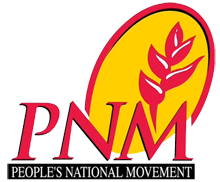
 The latest information out of the twin island state of Trinidad and Tobago, show a mixed picture for the general election outcome on Monday. The only consensus is that the results will be close. That contrast with poll findings from a survey conducted by H.H.B. & Associates carried out on behalf of Guardian Media and published last week Sunday.
The latest information out of the twin island state of Trinidad and Tobago, show a mixed picture for the general election outcome on Monday. The only consensus is that the results will be close. That contrast with poll findings from a survey conducted by H.H.B. & Associates carried out on behalf of Guardian Media and published last week Sunday.
According to that poll, the People’s National Movement (PNM) is leading the race in voter support with just eight days to go before the election, with 37 per cent of respondents said the PNM, while 30 per cent said the PP/UNC. The undecided respondents accounted for 31 per cent, while two per cent said Independent Liberal Party. These findings are exactly in line with recent election turn out which is just under 70 percent, with the undecided not ending up voting.
According to a report by the Guardian today, H.H.B & Associates, which conducted the Guardian Media Ltd (GML) poll, is projecting a PNM victory, with the opposition party taking 22 seats and the PP capturing 19. 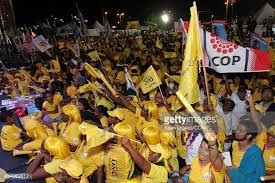 The newspaper did not say if the forecast was based on new data. The poll numbers of last week is unlikely to result in such a close race. IC Insider, last week forecasted that based on the above support, the PNM would win with 31 seats, if the poll numbers held up.
The newspaper did not say if the forecast was based on new data. The poll numbers of last week is unlikely to result in such a close race. IC Insider, last week forecasted that based on the above support, the PNM would win with 31 seats, if the poll numbers held up.
The Guardian is also stating that the latest, Nigel Henry/Solution by Simulation (SBS) pre-election tracking poll suggests a close race between the ruling People’s Partnership and the opposition People’s National Movement (PNM) in the general election tomorrow. The poll suggests that both parties are capable of winning 18 seats with five constituencies still too close to call. Poll results project that the winning party is likely to capture 21 or 22 seats.
This finding contrasted with the North American Caribbean Teachers Association (Nacta) poll by Dr Vishnu Bisram, which predicted yesterday that the PP would win 21 seats, the PNM 18 seats, with two marginal seats up in the air. The UWI Constitutional Affairs and Parliamentary Studies Unit (Capsu) poll released last week also found that the PP is leading in five marginal seats in the election race. 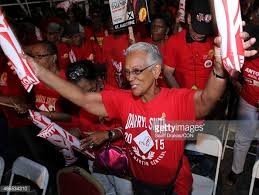 Solution by Simulation tracking poll by Nigel Henry projected yesterday that the PP was leading by 38 per cent, the PNM had 36 per cent, and 25 per cent were undecided. That would result in a voter turnout of 74 percent, a level that Trinidad and Tobago has not seen since 1961.
Solution by Simulation tracking poll by Nigel Henry projected yesterday that the PP was leading by 38 per cent, the PNM had 36 per cent, and 25 per cent were undecided. That would result in a voter turnout of 74 percent, a level that Trinidad and Tobago has not seen since 1961.
In the 2010 elections, the turnout was 69.45 percent, 66.03 percent in 2007 and 69.64 percent in 2002, next closet to these was 1991 with 65.76 percent. Based on the pattern of recent years it would be surprising if the turnout exceeded 70 percent and that could make a huge difference to the final election results.
Dr Vishnu Bisram, in his Nacta poll, said the percentage of undecided voters had shrunk considerably from a month ago, from “a high of 31 per cent to just six percent now,” and they could very well decide the outcome of the election.
Scotia Group jumps 11% on JSE Friday
Scotia Investments crossed 623,135 units of its parent company shares out of a total of 700,154 they bought, between $26 and $26.99 with 612,725 units traded at $26.99, for in house purposes.
The Jamaica Stock Exchange closed trading with a total of 30 securities changing hands. A total of 2,251,172 units traded, valued at $24,730,236, with 9 stocks rising, 12 declining in all market segments. The JSE Market Index rose 2,637.77 points to 100,293.46. The JSE All Jamaican Composite index jumped 2,948.29 points to 111,040.12 and the JSE combined index rallied 2,460.94 points to end at 103,322.22.
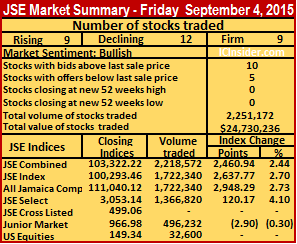 IC bid-offer Indicator| At the end of trading, in the main and junior markets, the Investor’s Choice bid-offer indicator had a reading of 10 stocks with bids higher than their last selling prices and 5 with offers that were lower, including 2 from the preference share sector.
IC bid-offer Indicator| At the end of trading, in the main and junior markets, the Investor’s Choice bid-offer indicator had a reading of 10 stocks with bids higher than their last selling prices and 5 with offers that were lower, including 2 from the preference share sector.In trading, Cable and Wireless traded only 559,840 shares, down from 4,748,662 units on Thursday and closed at 52 cents. At the close, visible bids exist for 10,000 shares at 50 cents and ranging between 48 cents and 49 cents, a total of 1,702,558 units and between 45-47 cents 537,500 shares. Visible offers at 52 cents, amount to 1,040,394 units, at 53 cents, 942,650 million shares, next are 595,177 shares at 55 cents and at 56 cents, 3,078,000 units. Carreras closed at $51 for a gain of $1 while a mere 1,045 units traded. Desnoes & Geddes traded 17,500 shares at $6.80, up 80 cents, Gleaner Company traded at 268,116 shares and added 5 cents to $1.85, Grace Kennedy traded down $1 at $63 with only 1,370 shares, Jamaica Broilers closed unchanged at $5.60 with 13,413 shares changing hands. National Commercial Bank traded just 53,230 shares and closed with a fall of 56 cents at $27.50, after it traded earlier at $30. Sagicor Group with 13,000 shares changing hands, closed with a gain of 43 cents at $13, Scotia Group traded 711,422 units between $23.80 and $26.99 but closed with a gain of $2.70 at $26.50.
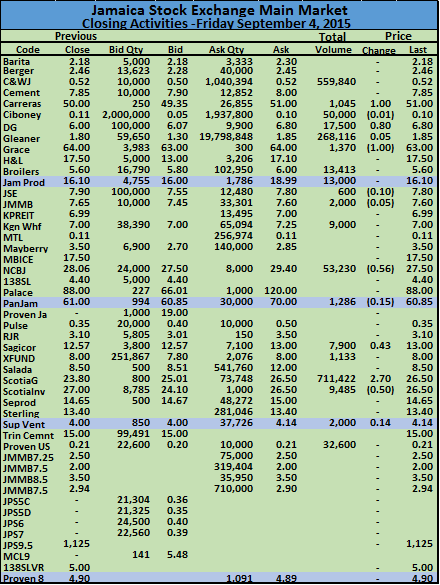 At the close there were only 6 offers ranging between $26.50 and $30 to sell 73,748 shares at $26.50, 299,990 at $27 23,750 units at $27.10 and 54,600 shares at $30. On the buying side, bids start at $25.01 to buy 800 shares but they are thin, until they drop to $23.71, to buy 306,040 shares. Scotia Investments lost 50 cents and ended at $26.50 while 9,485 units traded, the stock opened down to $24.10 within six minutes of the market opening, in response to disappointing earnings for the July quarter. Proven Investments ordinary share, traded 32,600 units at 21 US cents, Supreme Ventures added 14 cents to end at $4.14 with 2,000 units changing hands.
At the close there were only 6 offers ranging between $26.50 and $30 to sell 73,748 shares at $26.50, 299,990 at $27 23,750 units at $27.10 and 54,600 shares at $30. On the buying side, bids start at $25.01 to buy 800 shares but they are thin, until they drop to $23.71, to buy 306,040 shares. Scotia Investments lost 50 cents and ended at $26.50 while 9,485 units traded, the stock opened down to $24.10 within six minutes of the market opening, in response to disappointing earnings for the July quarter. Proven Investments ordinary share, traded 32,600 units at 21 US cents, Supreme Ventures added 14 cents to end at $4.14 with 2,000 units changing hands.
Cable & Wireless jumps 11% on JSE
The Jamaica Stock Exchange closed trading with all active indices falling with advancing and declining stocks being evenly matched as was the case on Wednesday. A total of 31 securities changed hands, resulting in 7,916,489 units trading, valued at $29,539,131, with 8 stocks rising, 8 declining in all market segments. The JSE Market Index fell 245.83 points to 97,783.73. The JSE All Jamaican Composite index declined 274.77 points to 108,234.94 at support level on the downside and the JSE combined index fell 50.41 points to end at 101,002.73.
 IC bid-offer Indicator| At the end of trading, in the main and junior markets, the Investor’s Choice bid-offer indicator had a reading of 8 stocks with bids higher than their last selling prices and 8 with offers that were lower.
IC bid-offer Indicator| At the end of trading, in the main and junior markets, the Investor’s Choice bid-offer indicator had a reading of 8 stocks with bids higher than their last selling prices and 8 with offers that were lower.In trading, Cable and Wireless rose 5 cents with 4,748,662 units and closed at 52 cents. At the close, visible bids exist for 41,500 shares at 45 cents and ranging between 40 cents and 44 cents, a total of 397,000 units, well down on amount on Wednesday’s bids of 2.46 million units at 40 cents and above. On offer between 52 and 55 cents, are 6 visible offers to sell 2.58 million shares. Caribbean Cement had 11,300 shares changing hands stock for a loss of 5 cents to $7.85, Carreras closed at $50 for a loss of 30 cents while 274,344 units traded. Jamaica Broilers closed unchanged at $5.60 with 50,174 shares changing hands, National Commercial Bank traded just 3,200 shares and closed with a fall of $1.94 at $28.06. Sagicor Group with 179,796 shares changing hands, closed unchanged at $12.57,
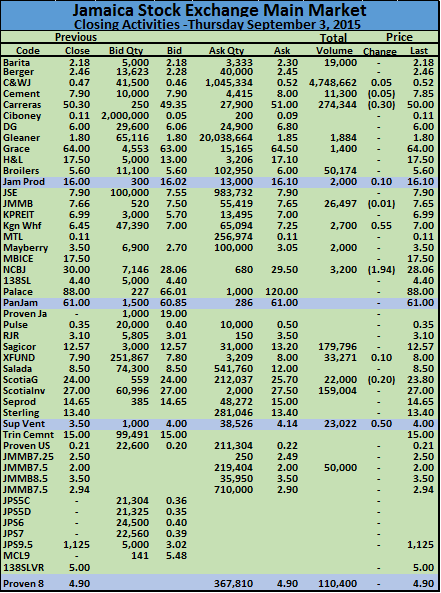 Sagicor Real Estate Fund landed 33,271 shares for a gain of 10 cents to end at $8, Scotia Group traded 22,000 units to close with a loss of 20 cents at $23.80, Scotia Investments ended at $27 while only 159,004 units traded. Proven Investments ordinary share, traded 15,346 units at 21 US cents, Supreme Ventures added 50 cents to end at $4 with 23,022 units changing hands, Jamaica Money Market Brokers 7.50% preference share traded 50,000 units at $2 and Proven Investments 8% preference share traded 110,400 units at $4.90 after trading at a 52 weeks’ low of $4.85.
Sagicor Real Estate Fund landed 33,271 shares for a gain of 10 cents to end at $8, Scotia Group traded 22,000 units to close with a loss of 20 cents at $23.80, Scotia Investments ended at $27 while only 159,004 units traded. Proven Investments ordinary share, traded 15,346 units at 21 US cents, Supreme Ventures added 50 cents to end at $4 with 23,022 units changing hands, Jamaica Money Market Brokers 7.50% preference share traded 50,000 units at $2 and Proven Investments 8% preference share traded 110,400 units at $4.90 after trading at a 52 weeks’ low of $4.85.
- « Previous Page
- 1
- …
- 472
- 473
- 474
- 475
- 476
- …
- 489
- Next Page »

